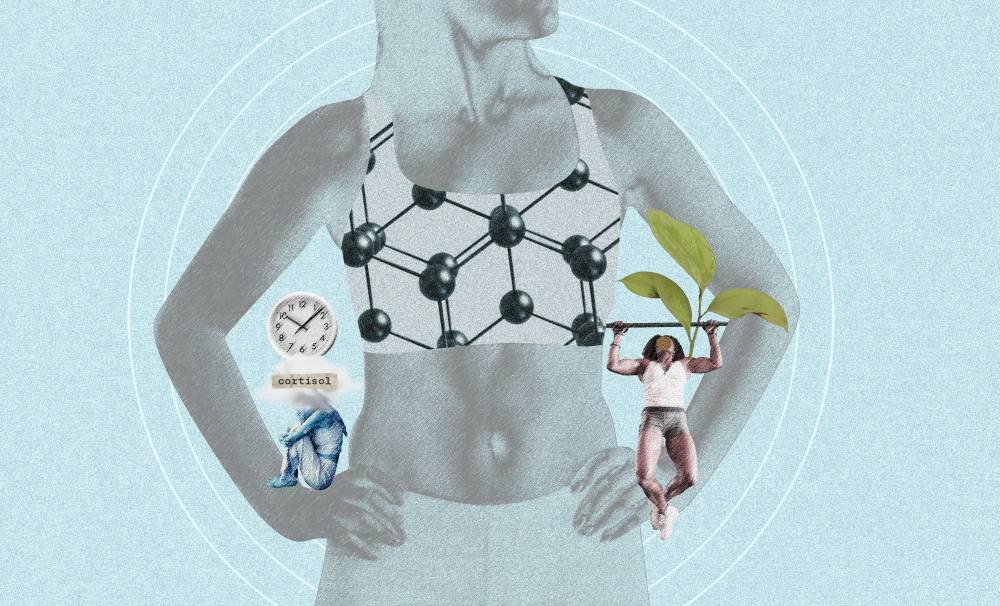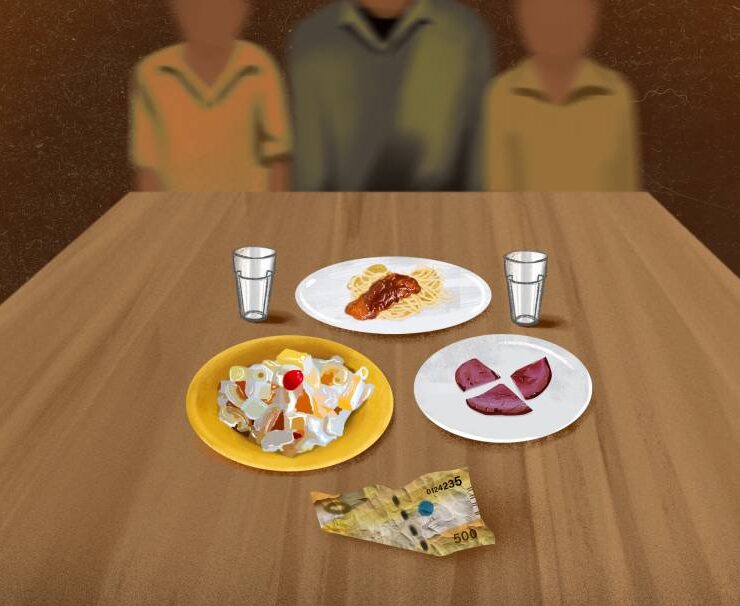When ‘eat less, move more’ stops working

Have you noticed it’s harder to lose weight—especially belly fat—as you age, even while sticking to the same workouts and diets that used to work?
Is it just a plateau? Maybe not. At midlife (40s to 60s), your hormones, especially cortisol, play a bigger role on whether “eat less, move more” works or fails.
Most of my clients are in their midlife, and I hear the same frustration all the time: “I’m eating less, moving more, but something’s really wrong.” The truth is, the first step isn’t another diet or workout plan—it’s recognizing how much life stress is weighing you down.
But real change happens when you start adjusting daily habits and shifting your perspective.
You’ve probably heard about cortisol and its link to belly fat. But how exactly does this stress hormone affect your weight, metabolism, and results?
The connection to cortisol
Cortisol is your body’s primary stress hormone. It’s normal—and even healthy—for cortisol to rise temporarily during exercise or in short bursts of stress. But when cortisol stays high for too long, it creates serious problems.
Why your old strategies backfire in midlife
1. Excessive cardio and/or frequent high-intensity workouts
Long cardio sessions can backfire. They accelerate muscle loss, keep cortisol elevated for hours, and often trigger overeating due to blood sugar crashes.
High-Intensity Interval Training (HIIT) can be powerful for fitness and fat loss, but it’s also stressful. Pushing your heart rate to 80 to 95 percent max every day keeps cortisol elevated for hours—especially if layered on top of poor sleep, constant stress, and inadequate nutrition.
Problems also arise when long-duration or high-intensity sessions are stacked too often, especially when combined with daily stress or blood-sugar spiking meals.
Solution: Prioritize strength training, and then balance it with stress-reducing workouts
Allot at least two days a week for strength training. If you’re just starting out, begin with simple 10-minute routines. As you become more consistent and stronger, gradually increase both the weights and the duration of your sessions.
A sustainable approach is to combine strength training with moderate cardio. HIIT remains a great tool, but limit it to one to two sessions per week.
Timing also matters. Cortisol naturally peaks in the morning, 30 to 45 minutes after waking, then declines through the day. Training during this window aligns with your body’s rhythm and supports recovery. Evening high-intensity workouts, on the other hand, can clash with low cortisol and rising melatonin, disrupting sleep. And late workouts often push dinner closer to bedtime as well, adding another stress load.
Finally, balance intensity with restoration. Add stress-reducing practices like yoga, walking, or meditation to help regulate cortisol, blood sugar, and restore your body’s natural rhythm.
2. Severe calorie restriction (less than 1,200 calories)
Cutting too aggressively reduces protein intake and accelerates muscle and bone loss. One study in Psychosomatic Medicine found that a 1,200-calorie diet can actually raise cortisol levels.
Even appetite suppressants that push intake this low lead to short-term weight loss at the expense of long-term health.
Solution: Eat quality meals with enough protein and fiber
Aim for more than 1,200 calories per day, focusing on protein, fiber, and healthy fats at every meal. Let go of the “low-calorie” mindset and instead focus on meal quality, food combinations, and even meal sequences.
3. Over-fasting
Fasting has proven benefits, but when done excessively, especially by stressed women, it can backfire. Prolonged fasting raises cortisol, disrupts blood sugar, and puts extra stress on the body. Men may tolerate stricter fasting better since they don’t experience the same midlife hormonal shifts.
From my experience, intermittent fasting works best for people who already live a relatively healthy, low-stress lifestyle. It’s not ideal for those who are sleep-deprived, overwhelmed, dealing with health issues, or relying on processed, “stressful” foods.
Solution: A realistic and sustainable fasting approach
A simple 12-hour eating window (or a bit more if needed) is often enough to gain the benefits of fasting without overloading the body.
For women in midlife, starting the day with a balanced breakfast before exercise helps keep cortisol in check. Ideally, have your first meal within 60 to 90 minutes of waking, and finish your last meal at least three hours before bedtime to support digestion and sleep.
4. Ignoring sleep, recovery, and daily stressors
Even if you eat well and exercise consistently, poor sleep can undo your progress. Too much caffeine or that “relaxing” glass of wine may feel like stress relief. But in reality, they spike cortisol, disrupt recovery, and accelerate muscle and bone loss. The same goes with damaging, unresolved stress and negative emotions.
Solution: Resolve the stressors that negatively affect sleep
If you have to choose between squeezing in a workout or getting proper rest, choose sleep. You can constantly adjust your workout later, or, if you miss it altogether, focus on eating balanced meals that day to avoid cravings and extra stress on the body.
A healthier evening routine could include meditation, journaling, calming music, or time with loved ones. These habits not only help you unwind, but also support deep, restorative sleep.





















